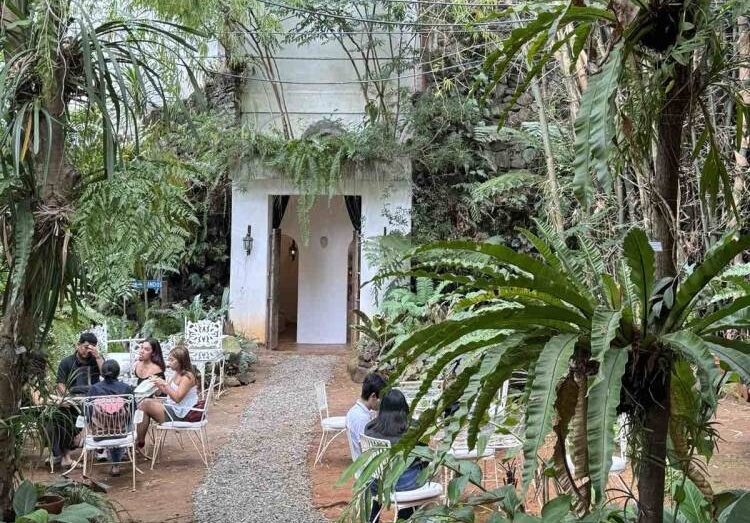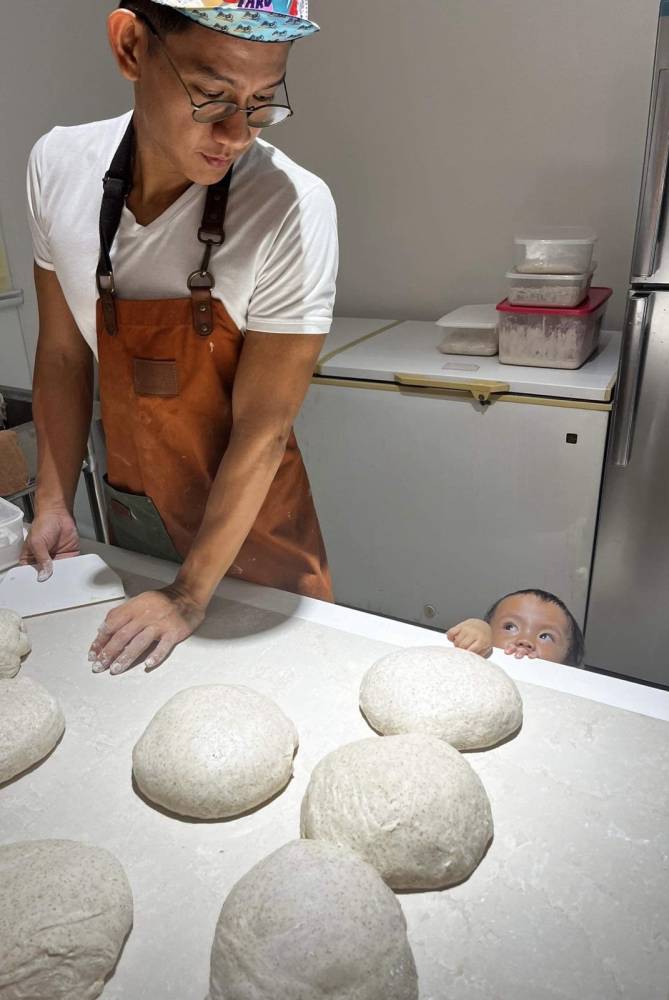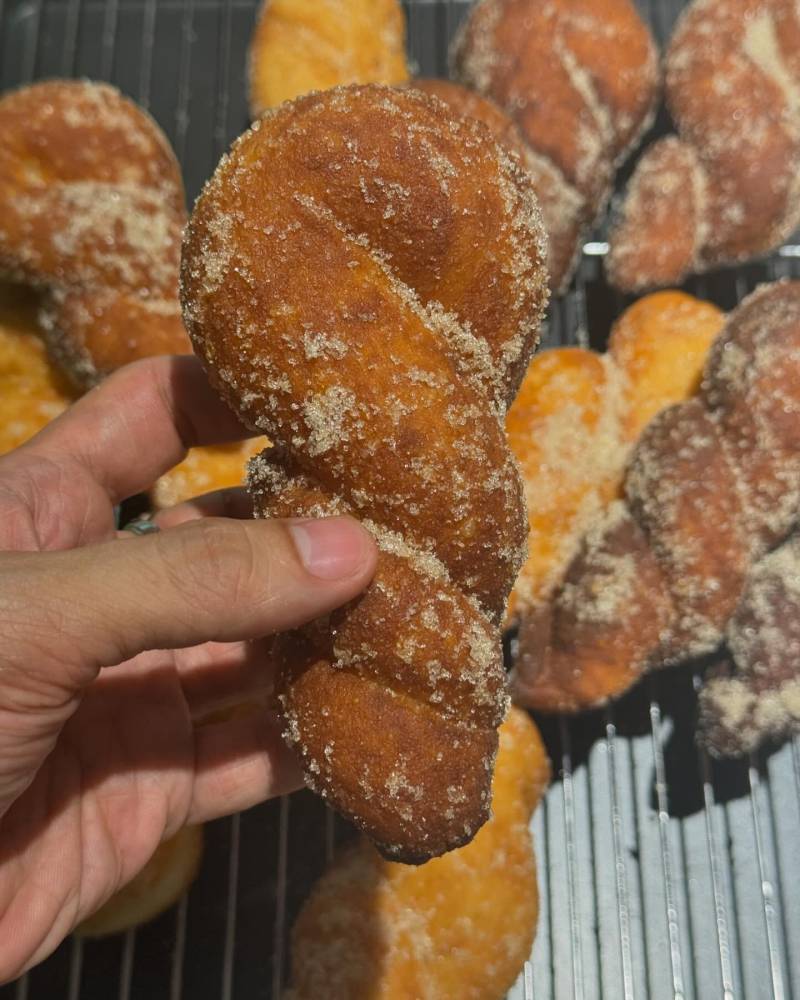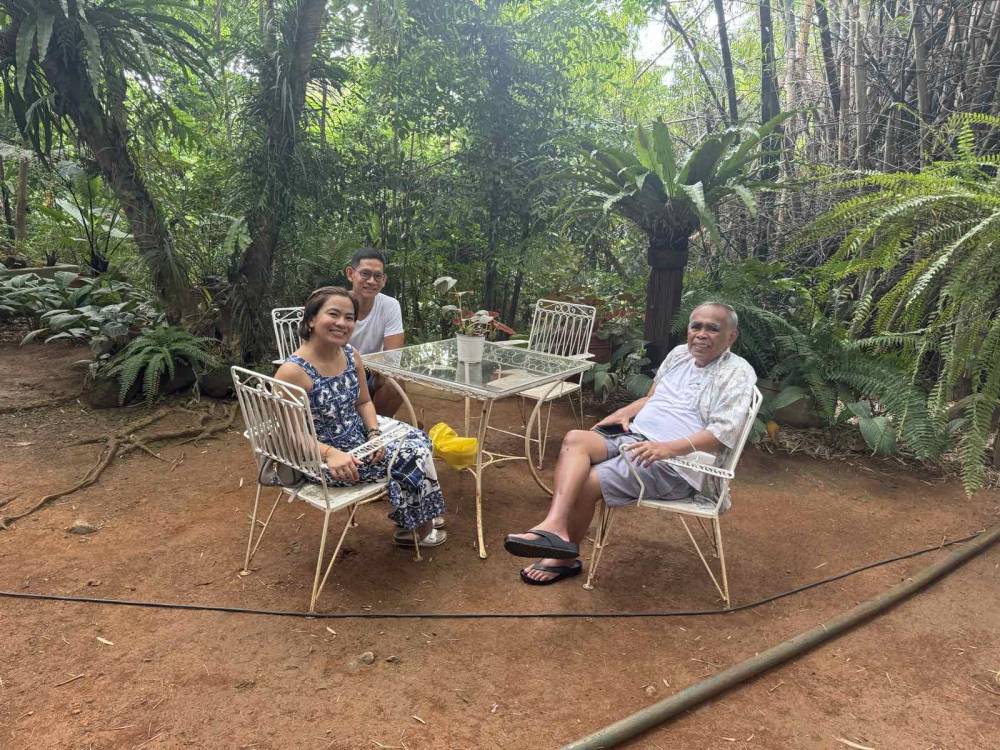From covering the news to baking bread

Like many others during the pandemic, Bim Santos spent time experimenting in the kitchen during lockdown. He had already tried baking breads in the past—pan de sal and some flatbreads—but he said he was also bitten by the sourdough bug that many home cooks caught.

“Nothing really came out of it until in early 2023, when I almost lost my mind as a painful injury grounded me at home and prevented me for months from doing something I love and regularly do, which is running,” Santos told Lifestyle.
In an earlier interview with this writer, he talked about how he got into the habit of regular exercise after he noticed he was gaining weight. “I started to make simple, smart, and sustainable choices—such as cutting down on my intake of rice, doing away with sugary drinks, gravitating more toward fruits and vegetables—that eventually became part of my diet,” he said then.
At the time, he was working at TV5. After graduating from college, Santos started out as a writer-researcher before joining BusinessWorld as a business reporter.
Santos has long been interested in breads, especially those made in small bakeries that can be found in neighborhoods throughout the country. When he was a reporter doing field work, he would buy assorted breads from these bakeries as snacks for the crew or as pasalubong for his family.

Core memory
One of his core memories as a child is almost cinematic in scope and involves bonding with his father, a stroll home in the dark, and a brief peek into the creation of the staple.
“I always had a soft spot for bread. One of my most formative memories as a kid was when my late father sneaked me inside our local cinema for the last full show. As we walked home during that ungodly hour after the movie, the streets were pitch-dark except for the small overhead lamp of a local bakery.
“The wildly intoxicating smell of freshly made bread was like the still point of a turning world during that time. My father then approached the small green gate, which was still closed as the bakers were still in production, and a small horizontal slat would suddenly and magically slide open. My eyes would pop out seeing that energetic hub of activity,” Santos said.
“At a time when most people are probably off to bed, here was a bevy of bakers working like clockwork on the dough—mixing, apportioning, baking. I almost felt like I was in Narnia taking a peek inside the wardrobe. It was an out-of-this-world scene that lit up my soul,” he added.
Fast-forward to 2023, when Santos was stuck at home with an injury. He and his wife Cairyn were also busy looking for breads to serve at their small shop, Sunnyside Taktak. When they couldn’t find ones to their liking, he decided to make them himself. “Since then, I have been happily lost in the wardrobe that I first caught a glimpse of many years ago.”
Research
His background in research has served him in good stead, as he makes it a point to read up and find out as much as he can about a particular bread that catches his attention. When he signed up for two short courses on baking last year, he did “tons of research and trials and errors” of his own.
“Maybe it’s the reporter in me but before I enrolled in the course, I didn’t want to come in blind, so I tried as much to first exhaust all available material—online or offline, such as in books—so that during class, all I was after was validation/invalidation of industry knowledge, further questions, and network building.”
He now has regular customers who order on a weekly basis items that include batard loaf, whole wheat sandwich loaf, focaccia, donuts, and brioche, all of which are sourdough-based.
“I also occasionally make other breads like dinner rolls, buns, pan de sal, sweetened breads, sometimes even rye, spelt, and squid ink-based ones for fun. My wife also makes various cookies and coffee and non-coffee-based beverages,” he said.
Santos makes healthier loaves of bread with no sugar or preservatives because he wants something good for himself and his family. “Maybe it also comes with age that one becomes more health-conscious and more attuned to one’s body. So I found it really empowering to be able to create what I wanted and needed. My family and friends and community fortunately appreciated these breads in turn.”
New opportunity
When they recently closed the two-year-old Sunnyside Taktak, they announced that customers could continue to order breads from them. “We learned a lot during those two years and made a lot of friends and supporters, but we felt we needed to move on after some point.”
They were given the opportunity to provide the refreshments at the well-known Pinto Gallery in Antipolo by owner and art collector Dr. Joven Cuanang.

“We set up shop inside the Pintô Arboretum, which has hundreds of indigenous plants and trees, including a massive thicket of decades-old bamboo trees—hence our name, The Bamboo Grove. Our cafe is in a small hut surrounded by some museum tables and chairs, including sofa beds, where customers and museumgoers can lounge and rest.”
The Arboretum is the last stop before visitors exit the museum, and by the time they’re done touring the sprawling property, they’re usually thirsty or hungry, making The Bamboo Grove a natural pit stop.
“We’re open on weekends, but now also do pop-ups on weekdays in close coordination with the museum office as they usually tell us if they’re expecting a large number of guests due to scheduled school field trips,” said Santos.
‘The third writer’
Some have said that baking is a precise, if mindless, activity. As long as you measure everything correctly and time everything precisely, you’ll be rewarded with a good product. What is Santos’ take on this?
“Perhaps to an extent it’s true, but recipes are like general directions, and each baker comes from a different place and context with different types of flour quality, climate and temperature, humidity, baking schedule, and personal circumstances, so everything is really relative.
“In baking, as in life, I believe you have to be like the third writer in Ricky Lee’s ‘Trip to Quiapo.’ There is a straightforward way to go to Quiapo, but you also have to get lost, break some rules, take some risks, make mistakes, and be a bit crazy, before arriving at your own Quiapo,” Santos said.
This early, he and his wife have far-reaching plans for their family.
“Our dream is to eventually build a small but durable bakery cafe that we can eventually pass on to our kids. Opening outside Antipolo is something that could be explored down the line, but for now we are taking the time for the slow and steady process of building a local shop that could meaningfully serve our local community.”

















